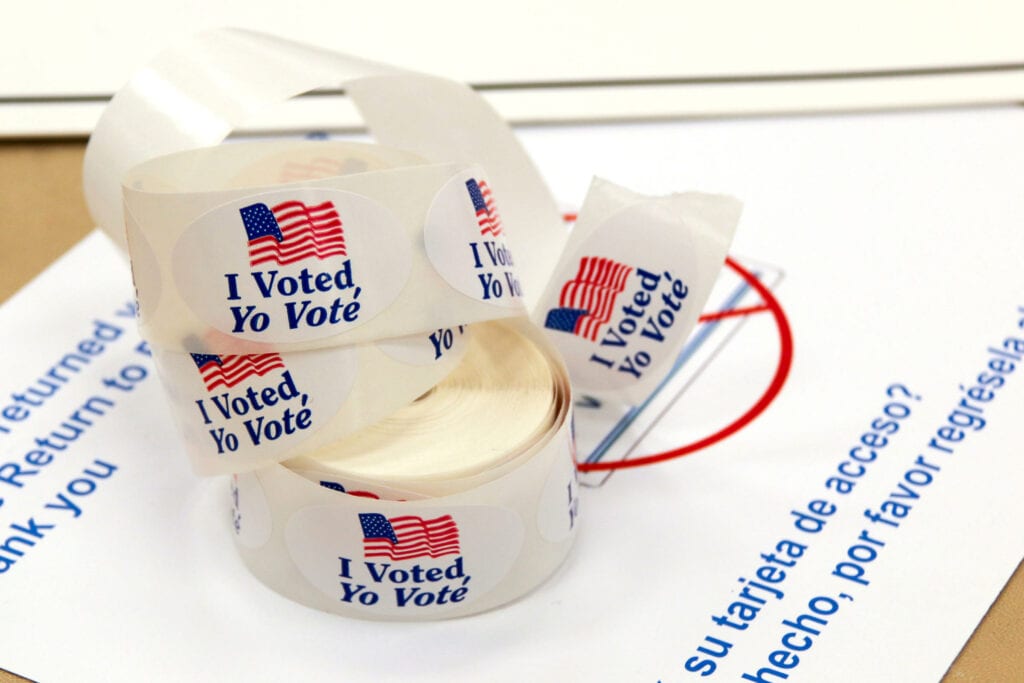The Electoral College is perhaps the most poorly understood part of the American Presidential election process.
As established in Article II, Section 1 of the U.S. Constitution, the Electoral College is the body that elects the President and Vice President of the United States. Each state has as many electors in the Electoral College as it has Representatives and Senators in Congress, and the District of Columbia has three electors. There are 435 representatives, 100 senators, and 3 electors assigned to the District of Columbia, bringing the total number of electors to 538.
When you cast your vote for President you are actually voting for a slate of “electors” to vote for the candidate who receives the most votes in your state. This is known as the “popular” vote.
In the months prior to the general election in November, state political parties nominate electors through various methods. Political parties often choose people to be electors who are politically active. Being selected as an elector is generally considered an honor.
After state election officials certify the popular vote for each state, the preselected electors meet in the state capital and cast a ballot for President and a ballot for Vice-President. Electors are prohibited from voting for a Presidential and Vice Presidential candidate who both come from an elector’s home state.
There are few prohibitions preventing one from being an elector. However, no “Senator or Representative, or Person holding an Office of Trust or Profit under the United States” shall be appointed an elector, according to the National Archives. After the Civil War, Section 3 of the 14th Amendment was added, stating that anyone engaging in “insurrection or rebellion” should not be nominated as an elector.
All but two states and the District of Columbia require that all electoral votes go to the candidate who receives the most votes in that state. Maine and Nebraska utilize a “district system” in which two at-large electors vote for the state’s popular vote winner and one elector votes for the candidate who won each congressional district’s popular vote.
There are 26 states that “bind” their electors to vote for their pledged candidate, utilizing various methods including oaths and fines. Though rare, electors have changed their vote, however, these “faithless electors” have never decided a presidential election.
In 1948, 1956, 1960, 1968, 1972, 1976, and 1988, there was one faithless elector in each of those elections. An elector cast a blank ballot in the 2000 election. Seven electors voted for someone other than the pledged presidential candidates, and six electors failed to vote for their promised vice-presidential candidate.
There have been five times the candidate won the popular vote but lost the electoral vote. This happened in 1824, 1876, 1888, 2000, and 2016.
With the ratification of the 20th Amendment, starting in 1937, on January 6 at 1:00 pm before a Joint Session of Congress, the Vice President opens the votes in alphabetical order from each state. He then hands the votes to four clerks, two from the House of Representatives, and two from the Senate, who announce the results. House clerks include one Representative from each party who is appointed by the Speaker of the House after the votes are tallied, the Vice President declares the winner and announces the name of the next President.
In the case that the Electoral College is deadlocked or if no candidate receives the majority of votes, a “contingent election” is held. The House of Representatives elects the President. Representatives from each state cast one vote for one of the top three contenders to determine the winner. Only two Presidential elections have been decided in the House of Representatives, twice in the history of the United States. This occurred in 1800 and 1824.
Since the birth of our nation, scores of proposals to reform or eliminate the Electoral College have sought to change the process for electing a president. However, since the process is specified in the Constitution, only a constitutional amendment can achieve this goal. Passing a constitutional amendment requires a two-thirds majority vote in the House and in the Senate and must be ratified by three-quarters of the states, or by calling a constitutional convention by two-thirds of state legislatures, which has never occurred.
In March 2020, a Pew Research Center study found that 58% of U.S. adults were in favor of amending the Constitution to elect the President by popular vote, while 40% said they wanted to keep the Electoral College.









